The best phone 2025: we've reviewed and ranked the top phones you should buy
Only the best phones from Apple, Samsung, Google and OnePlus

After months of rigorous in-hand testing, Future Labs benchmarking, and countless head-to-head comparisons, a new champion has been crowned. The Apple iPhone 17 Pro Max has claimed the top spot as our new best phone overall, pushing the iconic device in bold new directions with its stellar performance and an outstanding new camera system that truly sets a new high-water mark for mobile photography.
Our list of the best phones you can buy is now fully updated with all of the year's top contenders. We've spent weeks living with the entire Google Pixel 10 lineup—including the impressive Pixel 10 Pro—and put Samsung's latest Z Fold 7 and Z Flip 7 through their paces to see exactly where each device lands in the new hierarchy.
This guide reflects all of our comprehensive testing and in-depth reviews, ranking the absolute best phone for every need and budget.
We don’t just run benchmarks and move on; we live with these phones, using them for real-world tasks, shooting hundreds of photos, and pushing their batteries to the limit. Only after this exhaustive process, comparing every major model against each other, do we update this guide.
The competition, of course, never rests. The first major challenger of 2026 is already on our test bench, as we're currently putting the new OnePlus 15 through its paces. Check back soon to see if it has what it takes to dethrone our new champion.
We've reviewed over 1,500 phones at TechRadar over the last 20 years, and I've personally been reviewing phones even longer. I've tested every phone on this list to make sure it lives up to its promise and is worth your money.

📱Phil Berne is a pre-eminent voice in smartphone reviews, a professional reviewer since the Palm Treo 700 and BlackBerry Pearl days. He has reviewed hundreds of smartphones, including all of the best iPhone, Galaxy, and Pixel phones. Phil is TechRadar's Senior Editor for Mobile Reviews and Buying Guides.
The Best Phones

The iPhone 16 Pro Max gives you the best of everything Apple offers, and it's everything I want in a smartphone. Sure, the Camera Control was kind of a bust (like Apple Intelligence), but it didn't need a fancy new button to be the most refined, powerful and reliable smartphone you can buy.
Read more below

The OnePlus 13 simply blew me away with its fast performance, incredible battery, and stellar cameras. It also looks snazzy and feels amazing to use. It's not quite as polished as the big iPhone, but it's much cheaper, and it beats Apple's phone in many ways.
Read more below

The iPhone 16 Pro and iPhone 16 Pro Max have identical cameras, at last. Both give you 5x optical zoom, Camera Controls, and more fine tuning than ever before on an iPhone.
Read more below

The Samsung Galaxy S25 Ultra is like having a full camera bag in your pocket. It's not the biggest step up from the Galaxy S24 Ultra, but it adds megapixels and improved performance with its Snapdragon 8 Elite inside. This is Samsung best camera phone ever, and one of the best camera phones you can buy overall.
Read more below

The Google Pixel 9 Pro was our phone of the year pick for 2024, with a fantastic design and AI features that work so well, they can be scary. It has great cameras and it's more durable than any previous Pixel.
Read more below

With the Galaxy Z Fold 7, Samsung returns to form, cramming even more power and technology into a device that is somehow thinner than ever before. With its 200MP camera, incredibly thin design, and humongous foldable display, this device is a cutting edge mobile computer, with a price tag to match its exceptional quality.
Read more below

The iPhone 16 Plus had the longest battery life of almost any iPhone I've tested, both in the real world and in Future Labs. The iPhone 16 Pro Max may last a bit longer, but for hundreds less, the iPhone 16 Plus is the right choice if longevity is your concern.
Read more below
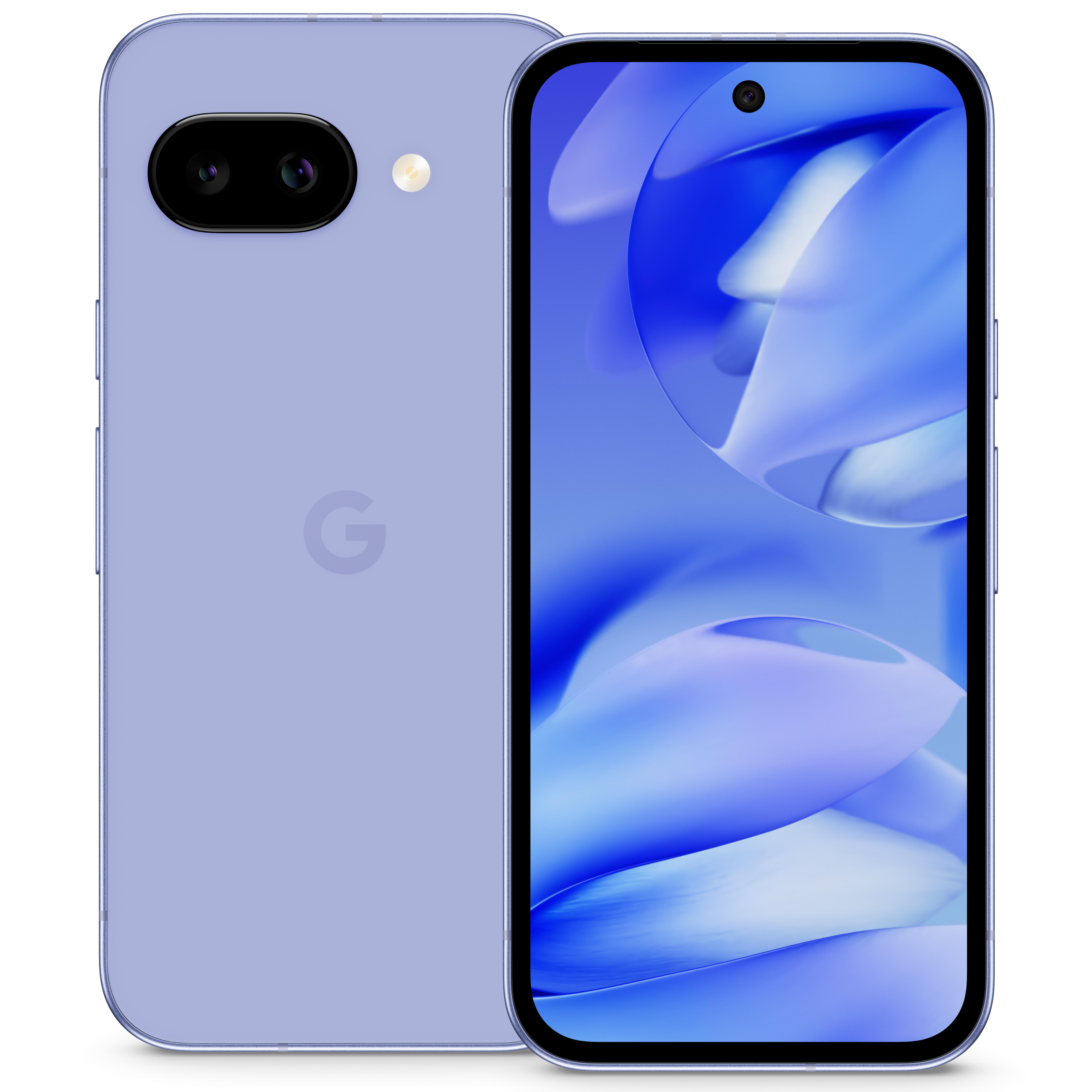
The Pixel 9a is the latest bargain phone from Google, and it gets the same processing power and much of the same camera capabilities as the mighty Google Pixel 9 Pro. Sadly, it veered a bit too far from the Pixel look, but it also comes in at a much lower price, making it not only a bargain Pixel, but the best bargain phone I've tested overall. Look for deals on this one, but even at full price it's a great phone to buy.
Read more below

The Apple iPhone 15 is a fantastic phone all around, with software that is intuitive and fun to use and great cameras. It won't get Apple Intelligence features, and maybe that's for the best when it comes to your teenager's smartphone.
Read more below
The best phone in 2025
Why you can trust TechRadar
Below, you'll find in-depth details about each of the best phones on our list. I've tested each model extensively, so you can be sure to trust our recommendations.
The best iPhone overall






1. Apple iPhone 16 Pro Max
Specifications
Reasons to buy
Reasons to avoid
✅ You want the biggest and best: The iPhone 16 Pro Max is the biggest, fastest, longest-lasting iPhone I've ever tested.
✅ You want Apple Intelligence ... eventually: Sometime in the next month this phone will get AI features, then more after that, then more...
❌ You want an affordable big screen: If you want to save hundreds, and have more AI features today, check out the Pixel 9 Pro XL instead.
❌ You want a smaller screen, actually: The iPhone 16 Pro has all the same cameras this year, so you aren't missing out by picking the smaller phone.
📱 The iPhone 16 Pro Max is the ultimate iPhone, with all of Apple's newest features inside, including the cool Camera Control and the superfast Apple A18 Pro chipset. Apple Intelligence is on the way, so this phone might get better over time, but it's a powerful, durable, stylish smartphone, if you can afford Apple's best. ★★★★½
Apple's iPhone 15 marks the most significant step up for a base iPhone in several years, earning its place as the best value phone money can buy today.
Design: This year's iPhone 16 Pro Max is recognizably an iPhone, of course, but the antenna gap is now a Camera Control that offers many new features. There's also a cool desert titanium, which is probably the best color and not just because it's the one I got.
Display: The iPhone 16 Pro Max has the biggest, brightest display ever on an iPhone, and it's a pleasure to use in any lighting conditions, even shooting photos outside under bright sunlight.
Camera: This is a big year for Apple cameras thanks to Camera Control, but Apple is also giving the iPhone 16 Pro Max more fine tuned tweaks over the tone and look of your photos, and early reviews say the results are fantastic. The high-speed video recording that enables more fluid slow motion may also be a game-changer for cinematic videos.
Performance: I couldn't find any way to slow down the iPhone 16 Pro Max, with its Apple A18 Pro chipset inside. I'll see how it handles Apple Intelligence, but in my tests with everything it can do today, the iPhone 16 Pro Max delivered all of the features with no problems.
Battery life: Our Future Labs battery test rank the iPhone 16 Pro Max as the longest lasting iPhone you can buy today. It lasted just a bit longer than the iPhone 16 Plus, but both offer incredible battery life.
Value for money: The iPhone 16 Pro Max isn't a cheap phone, but at least Apple didn't raise the price this year, even though this year's Pro Max inarguably offers more hardware and more value than before.
Read our full iPhone 16 Pro Max review
Attributes | Notes | Rating |
|---|---|---|
Value | A bigger phone with even more power and intelligence that holds the line on pricing | 4 / 5 |
Design | Iconic design with excellent materials and a brand-new hardware feature | 5 / 5 |
Display | Larger display but the resolution is unchanged. Still one of the best in the smartphone game | 4.5 / 5 |
Software | iOS 18 full of useful updates and a handful of really big changes to digest. Apple Intelligence is an exciting addition that has yet to reach its full potential | 4 / 5 |
Camera | Solid sensor updates but a lot ofbig changes on image processing and control. The Camera Control might be a game changer | 4.5 / 5 |
Performance | A18 Pro is more power than most need but you will never be disappointed in performance | 5 / 5 |
Battery | Excellent battery life and a weclome upgrade on wireless charge speed | 4.5 / 5 |
The best Android overall



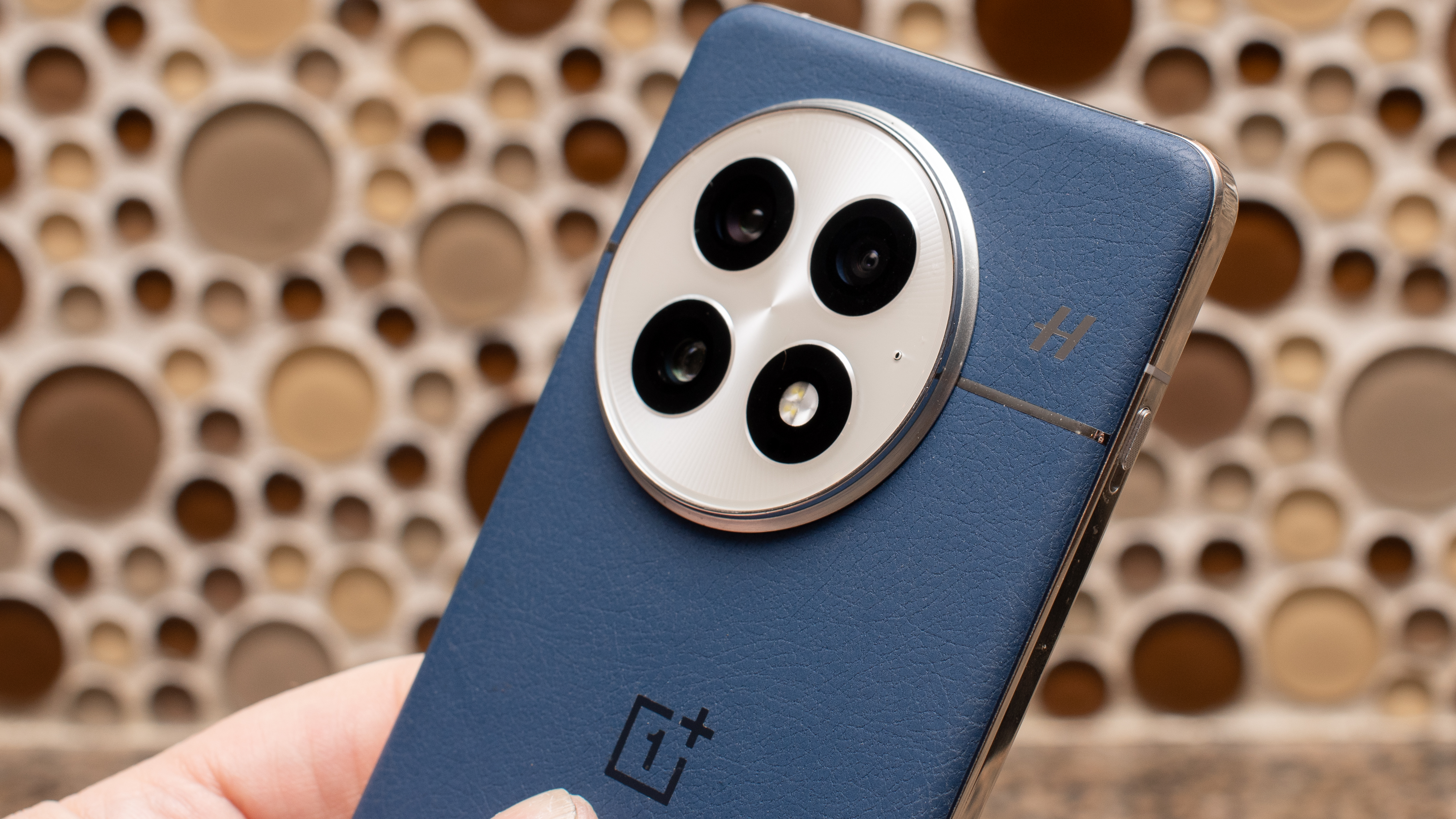
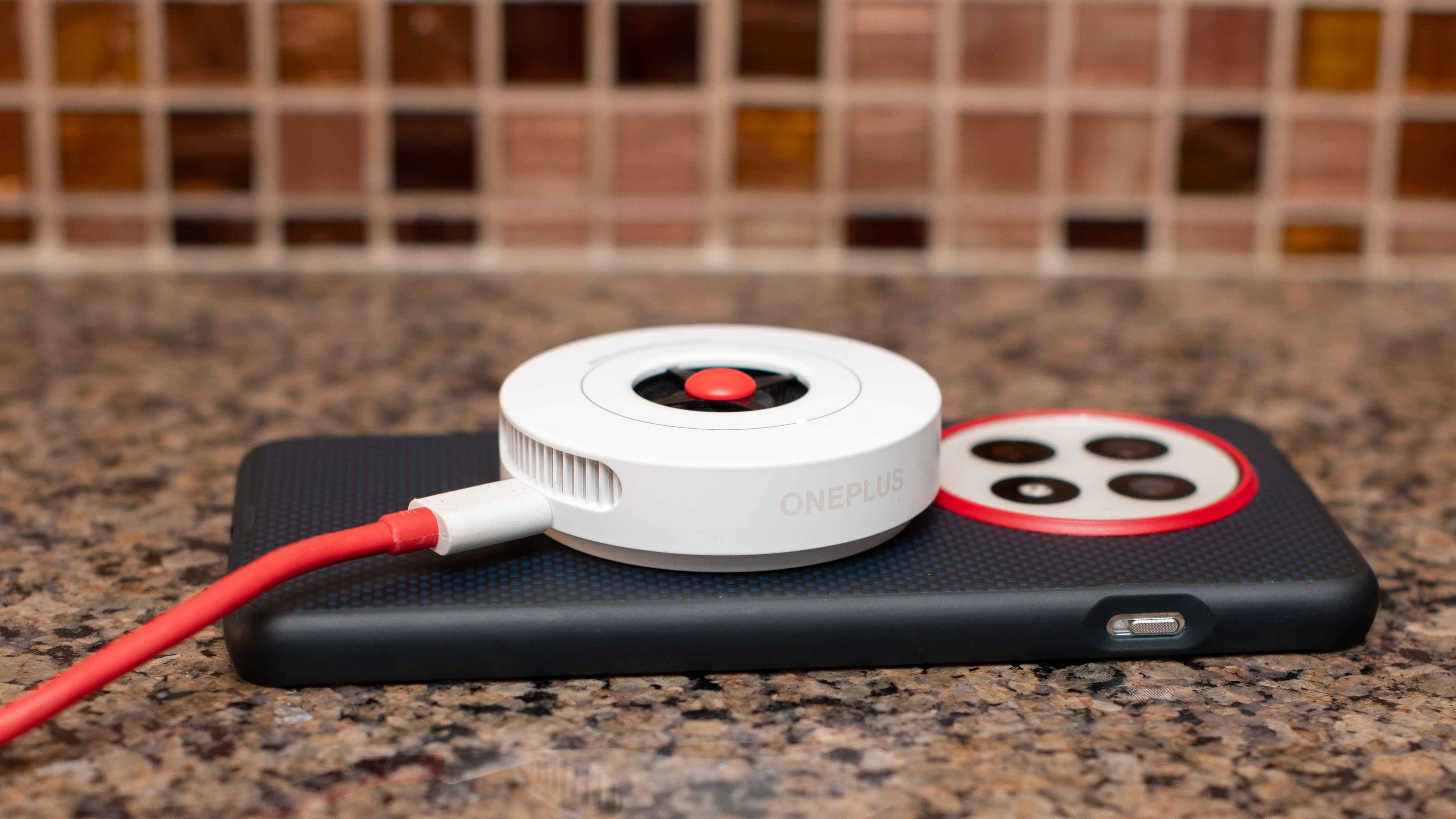
2. OnePlus 13
Specifications
Reasons to buy
Reasons to avoid
✅ You want the best battery life: On top of everything else it does well, the OnePlus 13 tops our charts in battery life testing. It lasts for days.
✅ You want to switch from iPhone to Android: This is the most polished and fun Android phone, with fewer foibles than most. This is the one for switchers.
❌ You want this phone for free: You won't get a deal on this phone from your carrier, but OnePlus offers discounts and bonuses.
❌ You want the best camera phone: The OnePlus 13 is one of the best camera phones, but the iPhone 16 Pro and Galaxy S24 Ultra have it beat.
📱 The OnePlus 13 took every concern I had about OnePlus and turned them into strengths, with a phone that is durable, long-lasting, and incredibly attractive. There was nothing I didn't like about this phone, and I'm excited to see how it develops in the years ahead with more advanced AI features. ★★★★½
OnePlus used to be a flagship-killer phone maker, but now it just makes flagships like the OnePlus 13, one of the best phones you can buy, even if you haven't heard of it. You won't find them at your mobile phone store, but it's worth seeking them out.
Design: This is a classy phone with an amazing vegan microfiber finish that is soft to the touch and more welcoming than hard glass. I highly recommend a OnePlus case, too, since it opens the world of MagSafe accessories. Oh, and did I mention this phone is IP69 water resistant? You can clean it in the dishwasher.
Display: One of the best displays ever on a mobile phone, this big screen is great for everything you want to do. It's also incredibly responsive, even if you get it wet.
Camera: Amazing cameras excel at action shots by freezing motion to a standstill. The colors and details get a lot of help from AI, and I still prefer the iPhone 16 Pro just a bit, but this is an enjoyable camera that produces fantastic pics you'll love to share.
Performance: In lab tests and the real world, the OnePlus 13 was the fastest phone I've ever seen, and it beats even the iPhone 16 Pro in many important processor tests, like multi-core performance. What can you do with all that power? The future will tell.
Battery life: This is the battery life winner, lasting nearly 20 hours in our battery rundown test. The big iPhone above died two hours earlier. The OnePlus 13 also charges faster than any other phone on this list. Even wirelessly, it charges faster than an iPhone.
Value for money: Don't let the sticker price scare you, OnePlus offers perpetual deals that drop the price on the OnePlus 13, and you'll get a trade-in bonus even if your old phone is broken (or connected to a wire). This is a premium flagship that will cost what you'd pay for the base model.
Read our full iPhone 16 Pro Max review
Attributes | Notes | Rating |
|---|---|---|
Value | Don’t let sticker shock scare you away, OnePlus offers discounts and trade-in bonuses to help. You just can’t get one at the Verizon store (try Best Buy). | 4 / 5 |
Design | A more professional look and an incredible feel with the new vegan microfiber. Every color is unique and outstanding, but the blue is the one to get, and definitely get a OnePlus case. | 5 / 5 |
Display | The best display on any smartphone in terms of color, and it also looks great with the curving edges sloping down to the frame. It could be brighter, but it’s a winner. | 5 / 5 |
Software | The best Android interface software, but I wish there was more to take advantage of all that power. Eventually AI may come along, but for now OnePlus isn’t pushing AI tools too hard. This phone is refreshing to use all around. | 4 / 5 |
Camera | The best cameras for action photos, even at night, and great pics all around. It does more with 3x zoom than some phones managed with 10x zoom. | 4 / 5 |
Performance | You won’t find a faster phone, according to our benchmarks. In the real world, it was harder to find the fast lane, but the interface was incredibly snappy and responsive. | 5 / 5 |
Battery | The longest battery life, thanks to a larger battery and the efficient Snapdragon processor, though OnePlus has managed to fit more battery inside without making the phone thicker. Oh, and it charges stupidly fast. | 5 / 5 |
The best iPhone cameras






3. Apple iPhone 16 Pro
Specifications
Reasons to buy
Reasons to avoid
✅ You want Pro performance in a smaller size: Finally, the iPhone 16 Pro doesn't compromise on performance or features vs. Apple's larger iPhone.
✅ You want Apple Intelligence ASAP: There are some new features available, but when Apple Intelligence launches with iOS 18.1, the iPhone 16 Pro will be ready.
❌ You want the biggest and best screen: The iPhone 16 Pro Max has a bigger display that packs more pixels, and other small phones might be more sharp.
❌ You want more AI now: If AI is your jam, check out what the Android phone makers are doing, especially Google and Samsung, because they tend to offer more features right away.
📱 With the latest camera features and the new Camera Control, the iPhone 16 Pro and the iPhone 16 Pro Max give you the best iPhone camera experience ever, and it's only going to get more interesting as Apple Intelligence rolls out with new photo features and much more. ★★★★½
The iPhone 16 Pro is the pint-sized powerhouse in Apple's latest iPhone lineup. It features all the same camera capabilities as its Pro Max sibling, but at a smaller size and weight. I wish it had more than 128GB to start, because those cameras produce great images you'll want to keep shooting. Otherwise, there are no big complaints about this year's iPhone.
Design: The iPhone 16 Pro looks exactly like last year's iPhone. It's a bit heavier, but you won't notice unless you put the two on a scale. The iPhone looks sleek in the new desert titanium color, and make sure to get a case that works with the Camera Control button on the side.
Display: The iPhone 16 Pro features a 6.1-inch OLED display that can remain always-on and can refresh up to 120Hz. For folks complaining about the refresh rate on the iPhone, just go Pro, it's where the best displays can be found.
Camera: The iPhone 16 Pro has the same 5X zoom lens as the Pro Max iPhone, but its really the improved quality thanks to the A18 chip that will have folks talking. I especially like the slow motion video that looks extra smooth thanks to higher recording speeds.
Performance: The A18 Pro chipset is the most powerful mobile platform I've tested, and there was nothing I could throw at this iPhone to slow it down.
Battery life: Battery life was very good on the iPhone 16 Pro, it always lasted a day of use. The Pro Max lasts much longer, thanks to its bigger battery inside, but the iPhone 16 Pro won't let you down early. Still, buy the faster charger just in case.
Value for money: The iPhone 16 Pro is a good value for a powerhouse phone in a compact package. Apple hasn't raised the price this year, though I wish it came with more than 128GB storage standard, so upgrade if you can.
Read our full iPhone 16 Pro review
Attributes | Notes | Rating |
|---|---|---|
Value | The price holds on this lovely and slightly larger phone but the value would be better with more storage | 4 / 5 |
Design | Iconic design with excellent materials and a brand-new hardware feature | 4.5 / 5 |
Display | Slightly larger display but the resolution is unchanged. Still excellent | 4.5 / 5 |
Software | iOS 18 full of useful updates and a handful of really big changes to digest. Apple Intelligence is an exciting addition that has yet to reach its full potential | 4 / 5 |
Camera | Solid sensor updates, 5x zoom is so welcome, and the Camera Control is an exciting addition | 4.5 / 5 |
Performance | A18 Pro is more power than most need but you will never be disappointed in performance | 4.5 / 5 |
Battery | Excellent battery life and a weclome upgrade on wireless charge speed | 4.5 / 5 |
The best Android cameras




4. Samsung Galaxy S25 Ultra
Our expert review:
Specifications
Reasons to buy
Reasons to avoid
✅ You want more than just a smartphone: The Galaxy S25 Ultra can do more than any other smartphone. It can be a laptop replacement, a note pad and pen, and an entire camera bag.
✅ You want to feel the future: The Galaxy AI features keep improving, especially in the camera and Gallery app. There are definitely more AI features to come, so this phone could get better with time.
❌ You don't need all of that phone: If you don't need everything and more, you can spend less on the Galaxy S25 Plus. It just won't have the amazing cameras you get with the Galaxy S25 Ultra.
❌ You prefer elegance and simplicity: Samsung software isn't getting better, though it is getting prettier. It's still complicated, with many duplicate apps and bloatware you don't want.
📱 The Galaxy S25 Ultra takes smartphone cameras to the extreme. You won't find a more versatile, refined, and clever device, but that power and performance comes at a high price tag. If you don't need all the Ultra features (still with the S Pen?), get the Galaxy S25 Plus instead, but if you want the best cameras, and the best Galaxy overall, the Galaxy S25 Ultra is the phone to beat. ★★★★½
Samsung's Galaxy S25 Ultra redefines smartphone performance. It stands out as arguably the best overall phone available. It surpasses the iPhone in battery life and performance, features more versatile cameras than any other Android device, and includes unique features rarely seen on modern smartphones, such as the Samsung DeX desktop experience.
Design: The Galaxy S25 Ultra's design refinements, though subtle, are noteworthy. This substantial phone now features a more rounded profile, which makes it a bit more appealing, though it now looks just like the cheaper Galaxy S25. The screen has gotten just a tad bigger since last year's model, though the phone is lighter overall.
Display: The Galaxy S25 Ultra's bright OLED screen offers an unparalleled smartphone display experience. While slightly brighter or faster alternatives may exist, its anti-glare coating significantly improves outdoor visibility. Samsung's display delivers vibrant colors and exceptional sharpness for any task.
Camera: The Galaxy S25 Ultra offers the most versatile camera system on any smartphone, with its 3X and 5X zoom lenses, as well as normal wide and ultra-wide offerings. The zoom cameras use much smaller sensors, so the images are only good for sharing, not prints, but the results are still the most impressive of any phone you'll try.
Performance: For users demanding top-tier speed, the Galaxy S25 Ultra is the clear choice. In both benchmark tests and real-world scenarios involving gaming and productivity tasks, it demonstrated the fastest performance of any phone tested, even outperforming the iPhone 16 Pro. This marks a first for Android phones against Apple's custom-designed chipsets.
Battery: The Galaxy S25 Ultra easily provides two days of typical use, and it readily handles a full day of heavy use. Without an increase in battery capacity, that Snapdragon seems to sip power more slowly, resulting in significantly improved battery performance.
Value: The Galaxy S25 Ultra's price is high, and the improvements may not seem like a dramatic leap. However, Samsung's commitment to seven years of software updates, including major Android OS updates, significantly enhances the phone's long-term value, and the Snapdragon 8 Elite processor should be able to handle whatever the future throws its way.
Read our full Galaxy S25 Ultra review
Value | Samsung held fast on the Galaxy S25 Ultra price. it's not a cheap phone, but design updates, integrated AI and inclusion of the S Pen make it good value. | 4.5/5 |
Design | The Galaxy S25 Ultra is now fully part of the Galaxy S-series design family and that generally improves it. We have a bigger screen, thinner and lighter body, and we still have all the things that make an Ultra special, including the titanium, the S-Pen and a big-enough battery. | 4/5 |
Display | The biggest Ultra screen ever. It doesn't break any new ground on technology, but is still an excellent screen for all kinds of content and uses. | 5/5 |
Cameras | There are a lot of lenses here and they're backed by high-pixel counts that will result in extremely detailed photos. Samsung only updated one lens since the last Ultra, but choosing the ultra-wide was the right move, as it improves both ultra-wide and macro images. | 4.5 |
Software and AI | Samsung's and its partners' commitment to deep AI integration is laudable, and it makes for the most frictionless AI experience I've found on any smartphone. It's also backed by a solid and even more useful One UI update. And the AI experience will likely get richer over time | 4.5/5 |
Performance | The S25 Ultra's Qualcomm Snapdragon Gen 8 Elite for Galaxy is one impressive chip. It's a near-perfect mix of performance and efficiency. | 5/5 |
Battery | Best battery life I've seen on a smartphone. Days of use is within reach. | 5/5 |
The best Android for AI







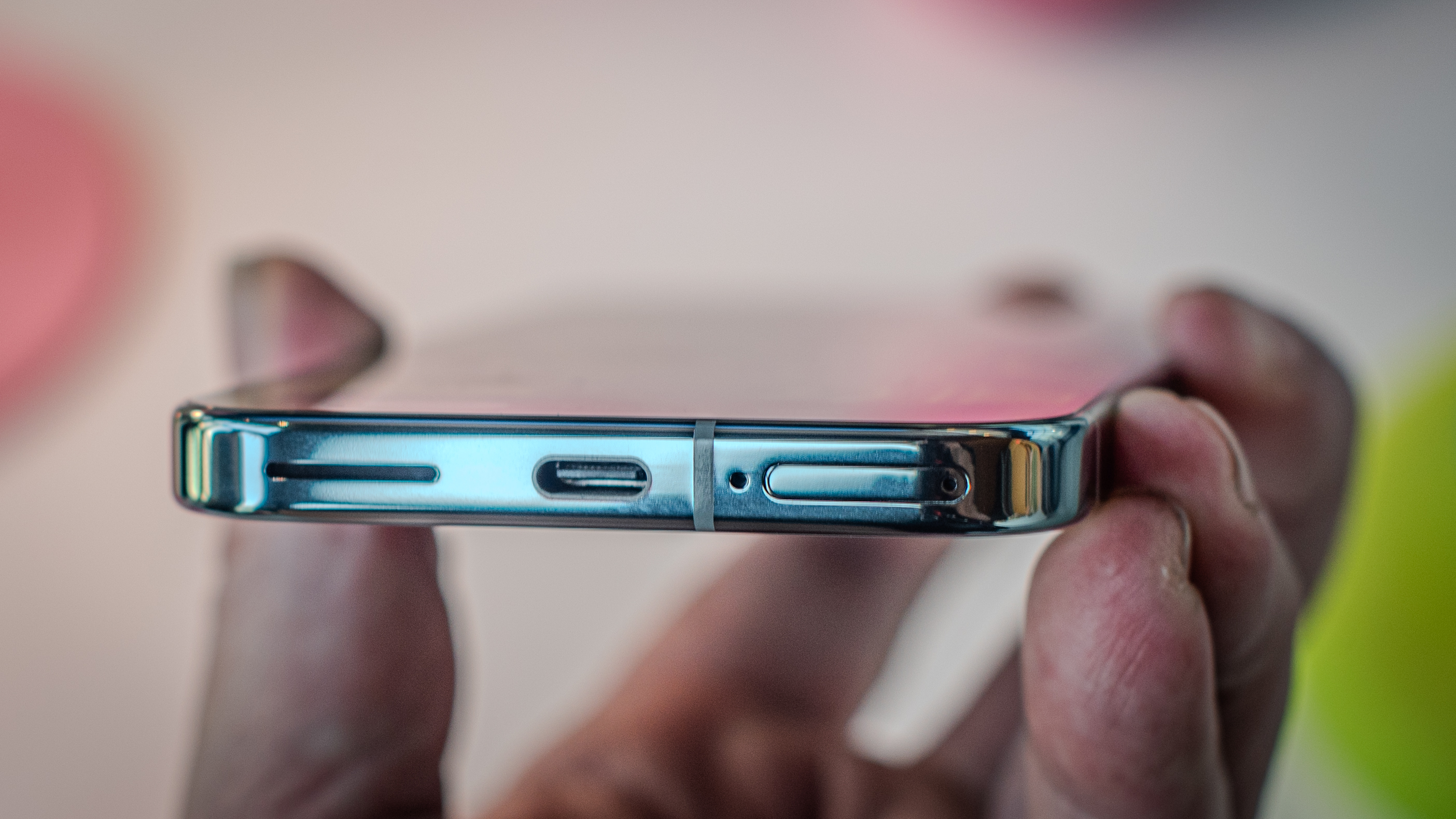

5. Google Pixel 9 Pro
Our expert review:
Specifications
Reasons to buy
Reasons to avoid
✅ You want to create a lot of stuff using AI: The Google Pixel 9 Pro has tons of AI features to be creative. You can make your own images, tweak photos, write stories and messages, and plenty more.
✅ You want an assistant to take notes for you: Google AI can listen to your calls and take notes later, so you don't have to grab a pen when the doctor or the dog-sitter starts giving you detailed instructions.
❌ You're worried about AI: The Google Pixel can listen to your calls and make deep fake images that will fool most people. If you're worried about AI, this phone won't help.
❌ You want the absolute best cameras: While the Pixel 9 Pro is impressive, nothing beats the Galaxy S24 Ultra for camera capabilities and quality, not even with Video Boost.
❌ You want a bigger Pixel 9 Pro: If you want this same exact phone, I mean exactly the same cameras and everything, only bigger ... get the Pixel 9 Pro XL.
📱 The Google Pixel 9 Pro is a huge departure from the past few years of Pixel design, and I love the changes. It looks sleek and modern, and it features more AI tools than you could imagine. Google's AI can have a conversation, fix your photos, or fake an insurance scam. Maybe don't do that last thing. ★★★★½
The Google Pixel 9 Pro is a whole new look for the Pixel family, but it keeps the recent Pixel heritage of new AI features, outstanding cameras, and the brightest and most colorful displays you'll find on any smartphone. It's not just a whole new look for Pixel, there's a lot going on that you need to check out, even if you just want to be wary of what's coming.
Design: The Pixel 9 Pro gets rid of the old camera bar for a newer, raised camera pill that is sleek, rounded, and very modern. The Pixel is more durable this year, with Gorilla Glass Victus 2 on the front and back for the best scratch and crack protection. The Pro and the Pro XL are identical, except for the bigger size, so pick your phone according to your comfort.
Display: Google continues to quietly dominate smartphone displays with the Super Actua screen on the Pixel 9 Pro. It's the brightest screen you'll find, and it looks fantastic. It also uses LTPO technology to refresh between 1-120Hz, so it works as an Always-On display without draining too much power. You won't find much better, especially if you need to take photos in bright sunlight. The Pixel 9 Pro display can handle it.
Camera: Photos looked fantastic from the Pixel 9 Pro, and video looked even better after it got an AI upgrade using Video Boost. There are still better camera phones for image quality and features, but the Pixel 9 Pro gives you a perfect starting point, and then you can jump into Google Photos for exclusive AI editing tools you'll only find on the Pixel phone.
Performance: The Pixel 9 pro lags behind all of the competition in terms of raw performance, and unfortunately that lag rears its head in the real world. I saw slowdowns and stuttering when I tried to do everything at once, even though my Galaxy S24 Ultra can handle everything and more. I hope this phone really lasts sevent years of Android updates, but the future is unclear.
Battery life: Battery life on the Pixel 9 Pro was solid, but it isn't the best around. I had no trouble getting a full day of use from my phone, but I wish it had faster charging in case I needed to top up. The Pixel 9 Pro XL charges faster than other Pixels, if you want that benefit, but otherwise I have no battery complaints, only wishes for next year.
Value for money: The Pixel 9 Pro seems a bit expensive, especially considering performance can lag behind the competition. Still, with a free year of Google One AI Premium, which includes 2TB of cloud storage, the deal looks a bit sweeter. Keep an eye out later in the year for price drops, there are usually discounts on Google phones near the holiday season.
Read our full Google Pixel 9 Pro review
Attributes | Notes | Rating |
|---|---|---|
Value | It’s a great phone all around, but performance lags significantly versus other phones in this price range, so maybe wait for a discount or a bundle deal. | 4 / 5 |
Design | Excellent new design; the biggest change to Pixel phones in four years. Fantastic materials and a more modern look. | 5 / 5 |
Display | Google offers the best smartphone screens around on the Pixel 9 Pro, and it’s surprising the company doesn’t crow louder. Super-bright – be careful to not overheat. | 5 / 5 |
Software | With a grain of salt and a sense of humor, the AI stuff is A-Okay. Google avoids bad AI stereotypes, and gives us a nice glimpse of the future for mobile AI. | 4 / 5 |
Camera | Fantastic cameras rival the best camera phones you can buy. Great new features, including Add Me for AI group photos. Camera settings are too difficult to manage. | 5 / 5 |
Performance | Performance lags significantly, both in benchmark testing and the real world. This phone lags if you push too hard, and Google wants you to push too hard. Seven years ahead? We’ll see. | 3 / 5 |
Battery | Solid battery life beats the iPhone, and the phone has no trouble lasting all day. You’ll want to use the cameras, so pack an extra charger, but if you’re careful this phone lasts no problem. I wish the charging was as fast as Google makes it seem. | 4 / 5 |
The best foldable phone




6. Samsung Galaxy Z Fold 7
Our expert review:
Specifications
Reasons to buy
Reasons to avoid
✅ You want the fastest foldable: The Galaxy Z Fold 7 uses the Snapdragon 8 Elite platform, which is the fastest and most efficient chipset we've tested.
✅ You want a foldable with real cameras: The Z Fold 7 packs the same 200MP sensor as the Galaxy S25 Ultra, one of our favorite camera phones. This is the best camera on any foldable phone, by far.
❌ You have to pay rent this month: The Galaxy Z Fold 7 is the most expensive phone you can buy in most markets, and it costs more than a laptop... or a month's rent.
❌ You love to draw and doodle: The Galaxy Z Fold 7 sadly loses its S Pen capabilities, making the Ultra the only phone for folks who love to draw and sign documents on the go.
📱 If you can swing the high price tag, the Samsung Galaxy Z Fold 7 is more than just the best superphone you can buy, it truly is like carrying two devices hidden in one compact package. With the improved camera sensor and the new lighter, thinner design, Samsung has toppled most barriers to buying a big foldable, except for the cost. ★★★★½
Samsung slims down the Galaxy Z Fold 7 to nearly impossible thinness, making it one of the thinnest phones we've ever seen. It's still a remarkable powerhouse, with an even better camera than before, but it costs more than ever as well.
Design: The Galaxy Z Fold 7 finally gets the design right, with a cover display that looks and feels like any other flagship smartphone, not the narrow look of Fold's past. It's so incredibly thin and lightweight that it feels like a normal phone when it's closed - you almost forget it opens to an 8-inch tablet with as much room as an iPad mini.
Display: The displays on the Z Fold 7 are both top-notch. They are bright and colorful, and perfectly sharp for any task. If you're worried about the crease on the inner display, don't be. It's unnoticeable when you are using the huge screen for browsing, games, or just as a viewfinder for the amazing new cameras.
Camera: Just like the Galaxy S25 Ultra, the Z Fold 7 has the Samsung ISOCELL HP2 200MP camera sensor inside, and it takes the best photos of any foldable phone we've seen. That big display is also great for Samsung's advanced AI photo editing tools.
Performance: The Qualcomm Snapdragon 8 Elite processor isn't just the fastest chipset you'll find in any smartphone today, it's also incredibly efficient, and the Z Fold 7 has better battery life than you'd expect, along with top notch performance for the most advanced games and multitasking.
Battery life: The Z Fold 7 has a smaller battery than most phone's this size, but the Snapdragon 8 Elite processor helps it sip juice slowly, and it had no trouble lasting a full day in our hands-on review time. Too bad it can't charge faster.
Value for money: To justify the incredibly high price, Samung needed to create a phone like no other, with capabilities that no other foldable or flagship smartphone can match. It has mostly succeeded, but the price is still a big, tough pill to swallow.
Read our full Galaxy Z Fold 7 review
Attributes | Notes | Rating |
|---|---|---|
| Row 0 - Cell 0 | Row 0 - Cell 1 | Row 0 - Cell 2 |
Value | The most expensive foldable out there, but it might also be worth it | 4 / 5 |
Design | Excellent, slim and light design that still feels elegant and solid. | 5 / 5 |
Display | Two fantastic and now larger screens. The crease is almost gone, but so is support for an S Pen. | 4.5 / 5 |
Performance | Better than the best Qualcomm chip on other Androids, and the performance knocked our socks off. | 5 / 5 |
Software | Android 16! One UI 8! So much AI. It may sound like a lot, but it's a winning combination. | 4.5 / 5 |
Cameras | The 200MP sensor is a major upgrade, and overall photography is excellent. We would have liked a 5x optical zoom. | 4.5 / 5 |
Battery | Really good battery life | 4.5 / 5 |
The best iPhone for battery life




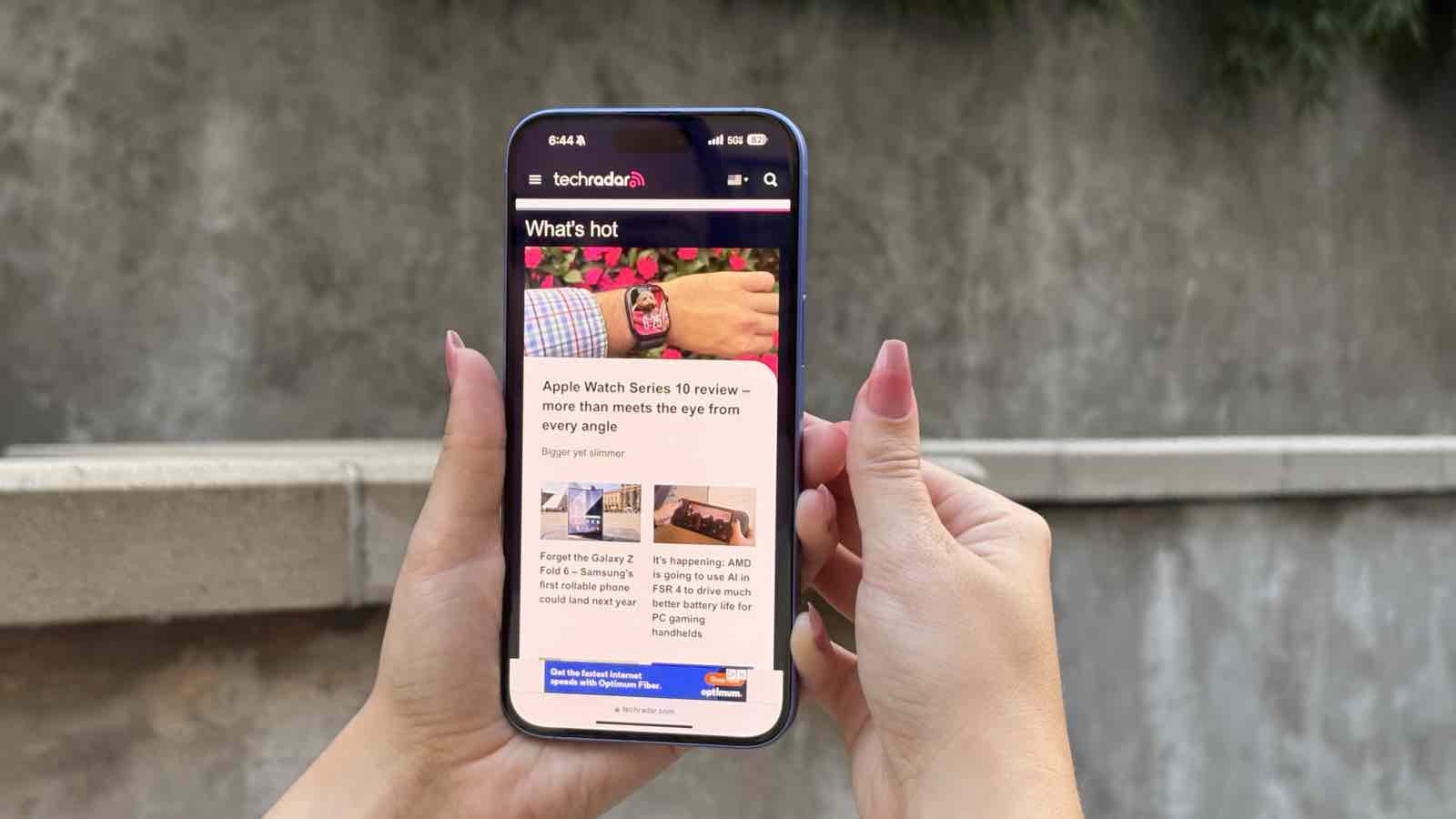
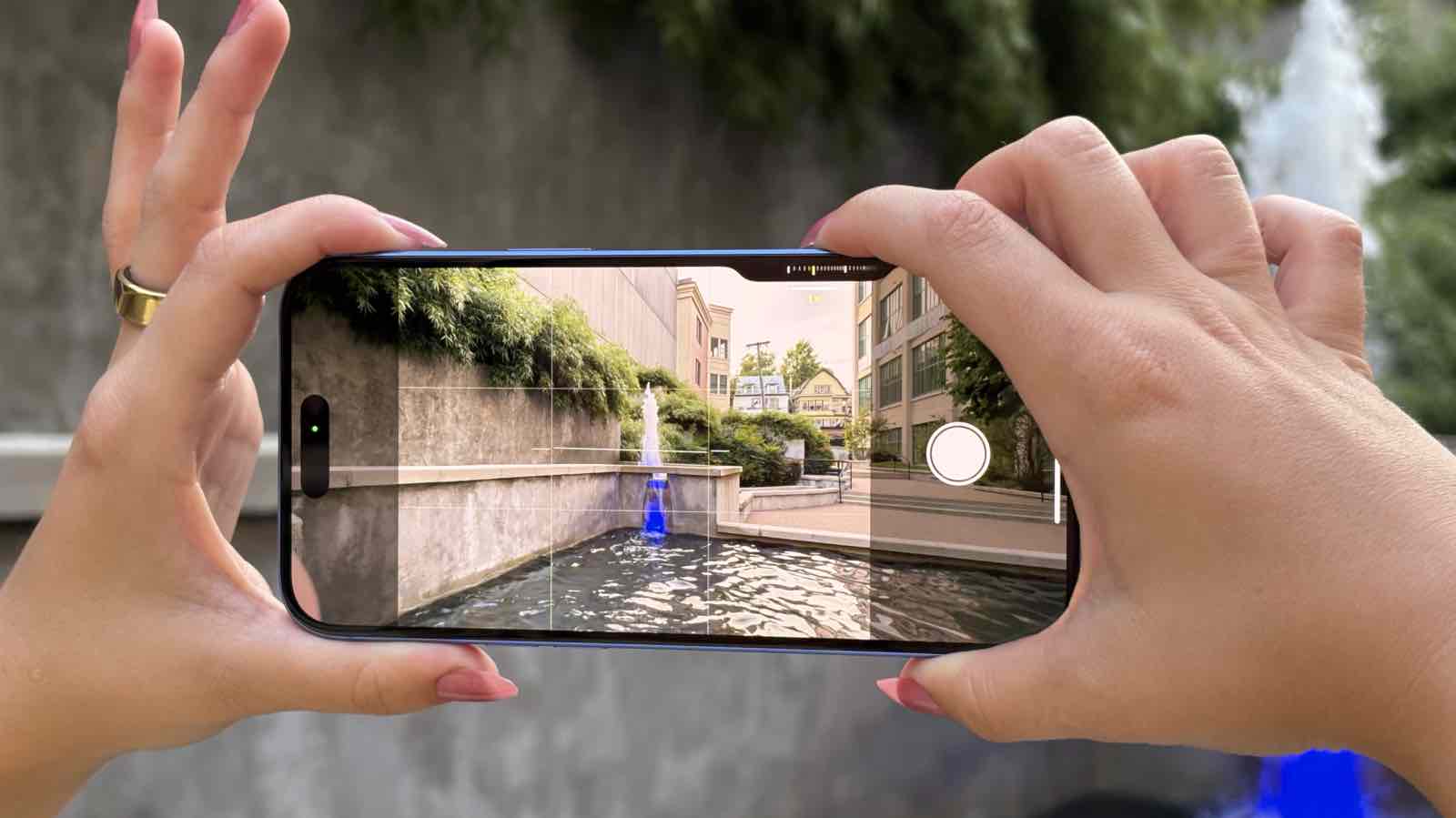
7. Apple iPhone 16 Plus
Specifications
Reasons to buy
Reasons to avoid
✅ You want an a bigger affordable iPhone: The iPhone 16 Plus gives you just enough more to make it worth the extra cost.
✅ You want the best battery (almost): The iPhone 16 Plus has the second best battery life, coming behind the iPhone 16 Pro Max by mere minutes in our tests.
❌ You don't want Apple Intelligence: If you don't want the latest Apple AI stuff coming soon, you'll need an iPhone 15 .
❌ You want bigger zoom: The ultrawide doesn't compare to 5x optical zoom on the iPhone 16 Pro, but the cameras are still great.
📱 The iPhone 16 Plus is only a bit more expensive than the iPhone 16, but you get a much bigger screen and a bigger
battery inside. That extra battery makes this the affordable battery life champ among iPhones, so if you need the most possible battery life from your Apple device, the iPhone 16 Plus is the best choice. ★★★★½
Apple's iPhone 16 Plus is only slightly more expensive than the iPhone 16, but you get a much larger display and the bigger battery that extra size allows. This makes the iPhone 16 Plus not only a great bargain option versus the iPhone 15 Pro Max, but also the best choice for battery life if you need your iPhone to last the longest.
Design: The iPhone 16 Plus looks like the iPhone 16 and not the Pro models, so you won't get the titanium frame, but you do have better color options with brighter hues. The USB-C port is also there, as well as the Dynamic Island camera, which used to be for Pro iPhone users only.
Display: The iPhone 16 Plus has a 6.7-inch display, and that 0.6-inch difference versus the iPhone 16 is actually pretty big. Apple didn't just blow up the same resolution, either, you get more pixels to keep the same sharpness as the smaller iPhone.
Camera: There are only two cameras on the iPhone 16 Plus, a 48MP main camera and a 12MP ultra wide. You might wish for a zoom lens, but these cameras still take stellar pics. It's an iPhone, after all.
Performance: The iPhone 16 Plus has a brand new Apple A18 chipset inside, which means it's ready for Apple Intelligence AI features that will be invading more powerful iPhone and iPad models in the next month or so. Even before the AI gets here, this phone is a powerful device that could easily handle anything I threw at it.
Battery life: In our battery tests in Future Labs, the iPhone 16 Plus was the second best iPhone I ever tested in terms of battery life, only minutes behind the much more expensive iPhone 16 Pro Max. It lasted well over 16 hours of runtime, versus a scant 12 hours of battery life on the smaller iPhone 16.
Value for money: If you were already considering the iPhone 16, you should probably just spend a little more and have more battery life and a much bigger display. The next upgrade, to the Pro-level chips, is the one that hurts the wallet more.
Read our full iPhone 16 Plus review
Attributes | Notes | Rating |
Design | The iPhone 16 Plus offers a 6.7-inch screen in a lightweight design that comes in fun colors. | 4.5 / 5 |
Display | While it's not 120Hz, the 6.7-inch is expansive, rich with details, and gets quite bright. | 4 / 5 |
Performance | The A18 makes the iPhone 16 Plus fly and provides ample headroom for years of use. | 4.5 / 5 |
Camera | Camera Control steals the show, but both the main and ultra wide benefit from improved low-light performance. | 4.5 / 5 |
Software | iOS 18 runs really well here and provides a lot of functional enhancements. | 4 / 5 |
Battery | While it's no longer the best battery life of any iPhone, the 16 Plus still easily lasts all day long. | 4 / 5 |
Value | At $899, you're getting plenty of performance in a polished build that should last for years... and get software updates. | 4 / 5 |
The best bargain phone
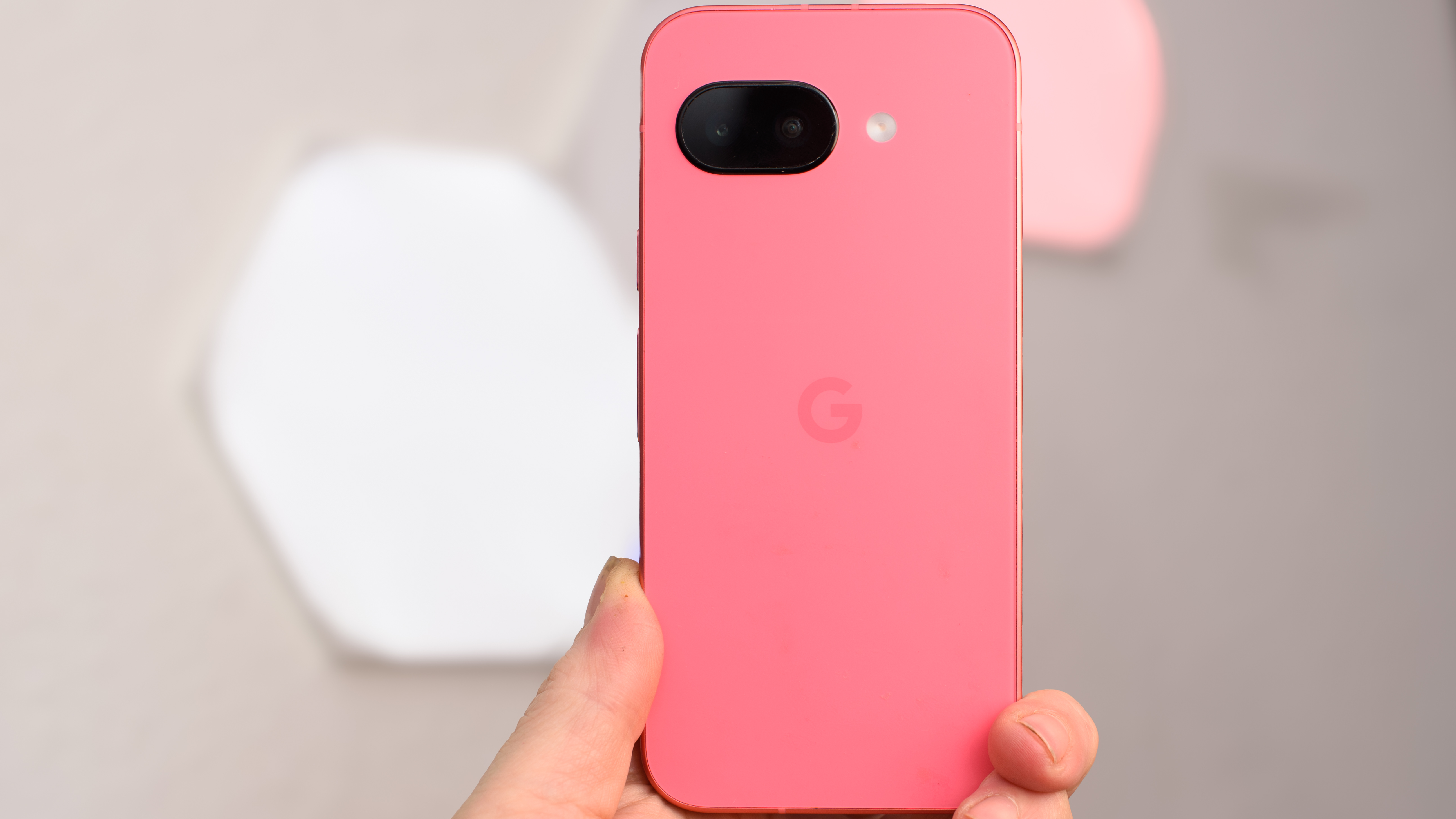
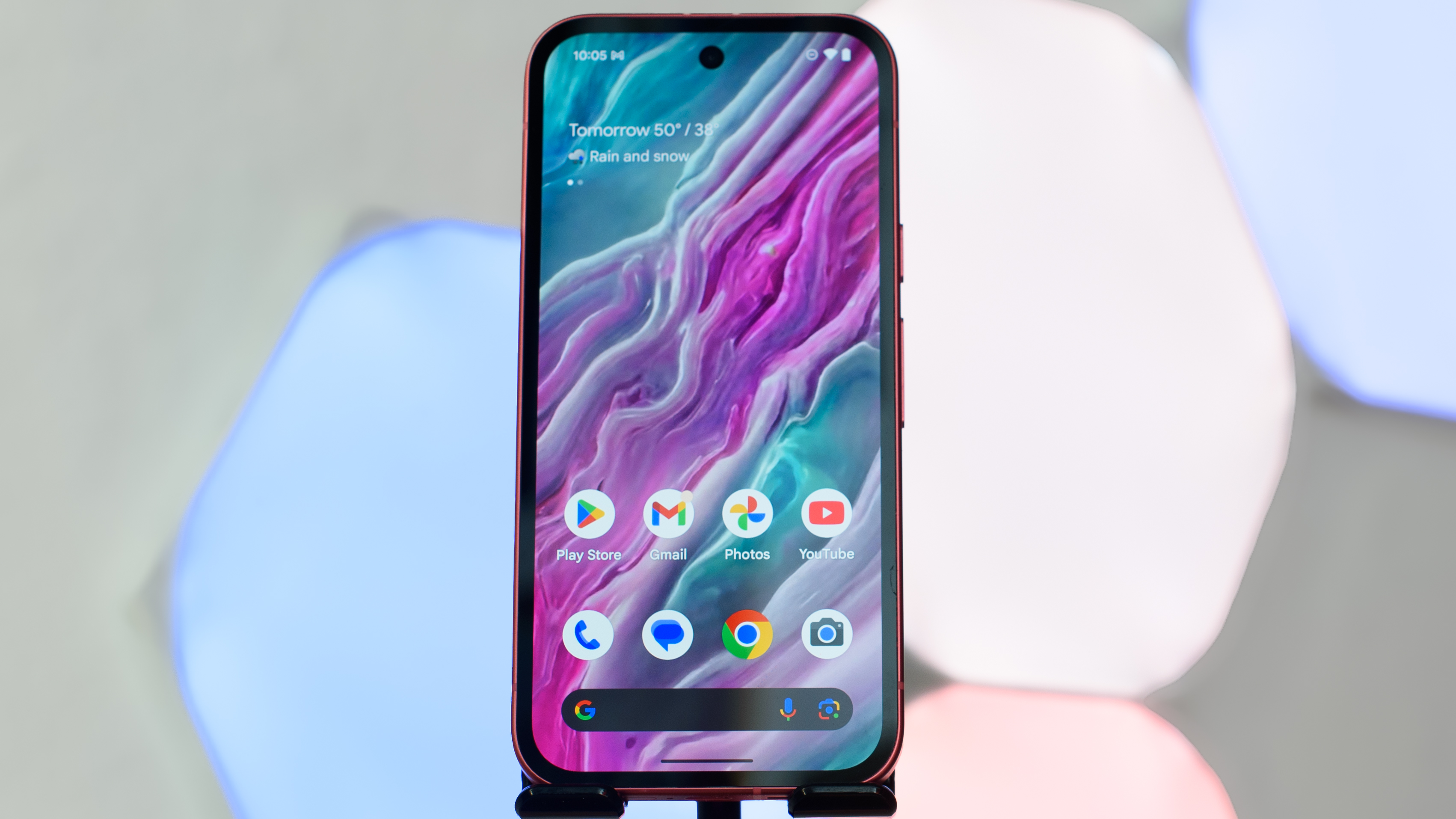
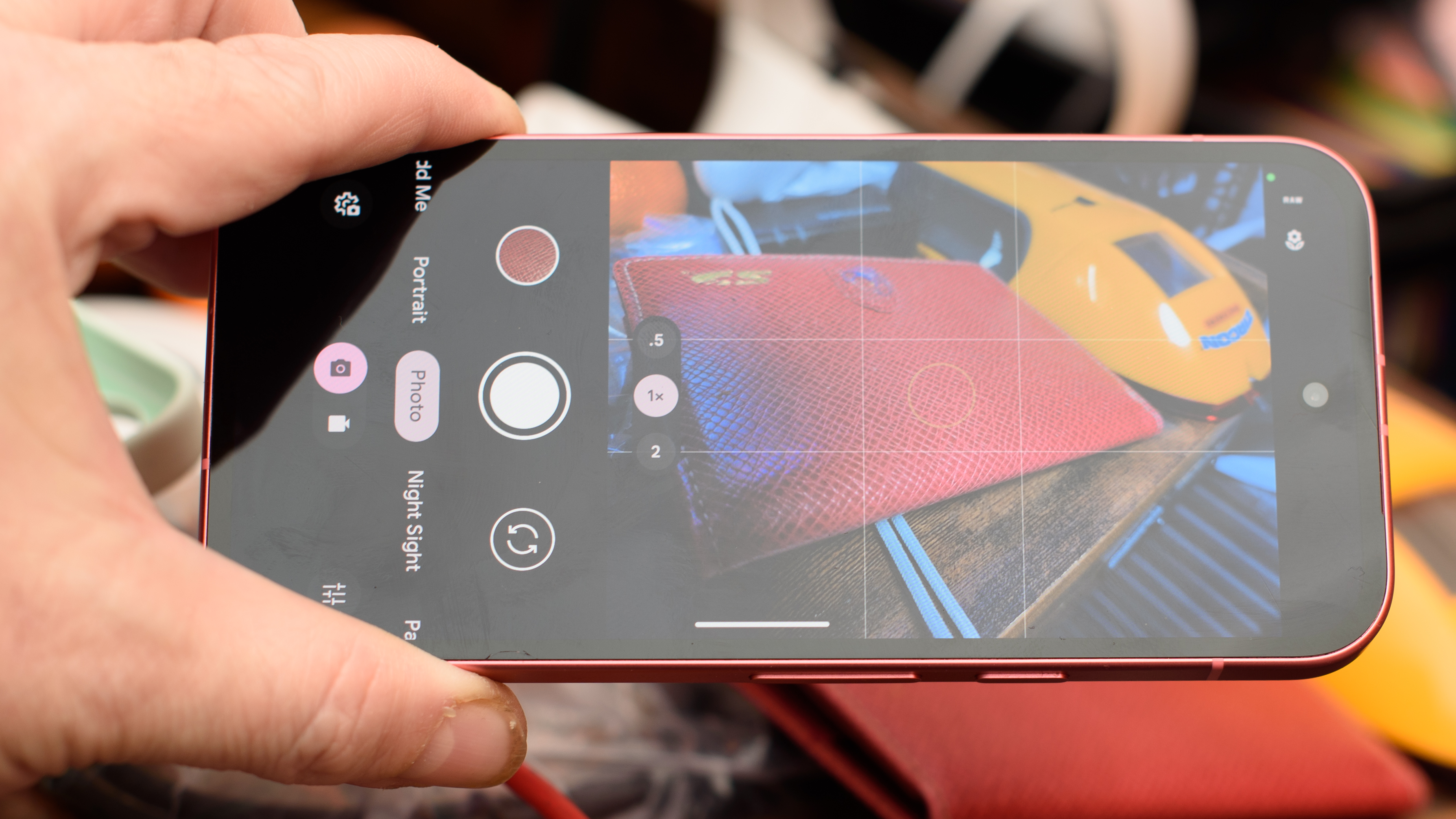



8. Google Pixel 9a
Our expert review:
Specifications
✅ You want a great camera for macro photos While there's no zoom, Google’s Pixel 9a surprisingly shoots some of the best close-up photos I’ve seen on any smartphone, let alone a bargain.
✅ You want a durable phone that will last a while The Pixel 9a is built tougher than previous Pixel A-series, and it will get seven years of major Android OS and security updates.
✅ You want a great AI phone There’s plenty of AI on this phone, and the best features can screen calls and record conversations, helping you keep your hands free and your mind on task.
❌ You want a nice looking phone Ugh, there's just no style to this phone. You can hardly tell it comes from the same lineage as the Pixel 9.
❌ You don’t want a bigoted AI tool on your phone Google's Pixel Studio produces stereotypes that reinforce bigotry. I hope Google removes the ability to draw people.
📱The Google Pixel 9a is the latest A-series phone from Google, and that means it gives you the same performance as the Pixel 9 with the great cameras and dazzling display you expect from Google. Sadly, the series takes an ugly turn, literally, and the Pixel 9a isn't very handsome, but it comes with most, if not all, of the latest Google AI features. It’s a solid bargain phone, if you don’t mind the looks. ★★★★
The Pixel 9a delivers typical Pixel strengths like great photos and useful AI, backed by a seven-year update promise, but wraps it all in a surprisingly bland design that deviates significantly from the main Pixel 9 series.
Design: A major departure from the stylish Pixel 9, the Pixel 9a features a flat, plain design with a simple camera bump, reminiscent of generic budget phones, though the Peony and Iris colors are nice. Despite its looks, Google claims it's the most durable A-series yet with IP67 water resistance.
Display: The 6.3-inch OLED 'Actua' display is excellent for the price – very bright and colorful, matching the Pixel 9. Turning off the sometimes-dim Adaptive Display mode improves the experience. It uses older Gorilla Glass 3, however.
Camera: Photos surprisingly hold up well even against the Pixel 9 Pro in terms of color and balance, though resolution is capped at 12MP and fine detail is lacking due to smaller sensors than even the Pixel 8a. The standout feature is its astonishingly good macro photography capability, rivaling dedicated cameras like my own full frame Nikon.
Performance: The Tensor G4 chip provides adequate performance for daily tasks and runs most AI features, but it's not as fast as competitors and it felt a bit sluggish in my testing, especially with only 8GB of RAM. Worryingly, it already lacks some AI features found on the Pixel 9, casting doubt on the seven-year update promise's scope.
Battery life: Despite having a larger battery (5,100 mAh) than the Pixel 9, the Pixel 9a doesn't offer significantly better battery life, lasting a full day but not exceptionally long. Charging is slow at 23W wired, but wireless charging is included, a plus at this price.
Value for money: At $499 / £499 / AU$849, the Pixel 9a offers solid value, especially considering the seven-year update commitment and strong camera performance (particularly macro). However, like previous A-series phones, expect potential discounts down the line, making it potentially an even better bargain if you wait.
Read our full Google Pixel 9a review
Attributes | Notes | Rating |
|---|---|---|
Value | A great phone at this price, with incredible longevity thanks to seven years of updates. The cameras are among the best in this price range, even if the look isn’t so premium. | 5 / 5 |
Design | It’s durable, and the colors are real nice. Otherwise, it’s ugly as sin. Seriously, Google had a winning A-series formula that it ruined when it created this phone. But the design doesn’t get in the way, at least. | 3 / 5 |
Display | Excellent display that's bright and colorful, better than most phones at this price. Some trouble with Adaptive mode was easily fixed. If only the phone’s performance could keep up with the fast screen. | 4 / 5 |
Software | A polished version of Android that's easier to use, with plenty of features. Some useful AI tools, but also some AI imagery slop that resorts to bigotry and should be removed from this phone. | 2 / 5 |
Camera | Solid cameras take photos that look like they could have come from the Pro model, if you don’t look too close. Astonishing macro capabilities rival my DSLR camera and make this phone a winner. Too bad about the low resolution and lack of detail, and some zoom would have been nice. | 3 / 5 |
Performance | Performance is adequate for Pixel fans, though it won’t win any races. No problems with my favorite apps and games, but things slowed down when I engaged the AI as it sent requests to and from the cloud. | 3 / 5 |
Battery | A larger battery somehow doesn’t equal more battery life, but the Pixel 9a still lasts a full day with no trouble, and has wireless charging, a rarity at this price. | 3 / 5 |
The best phone for Teens
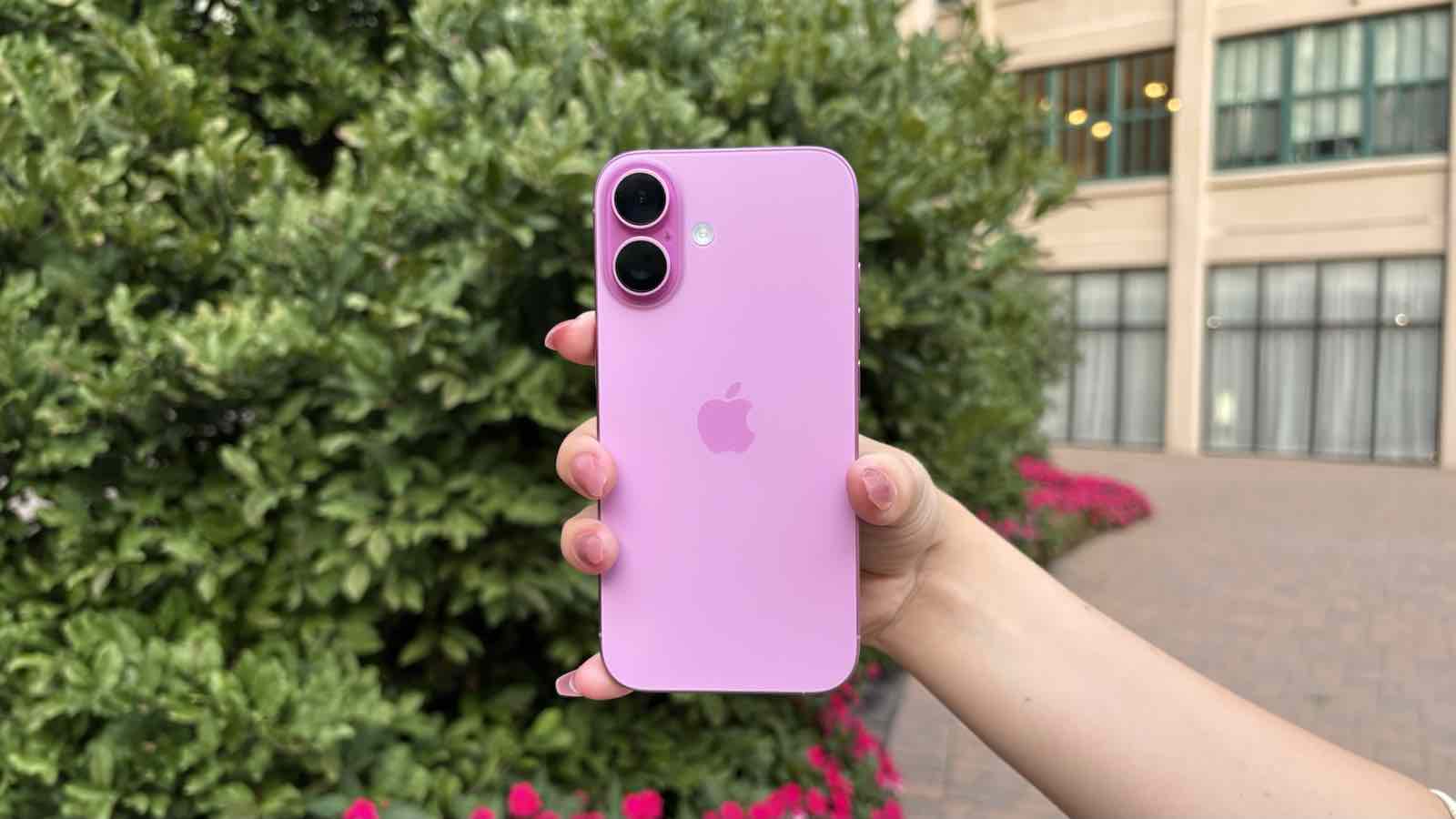



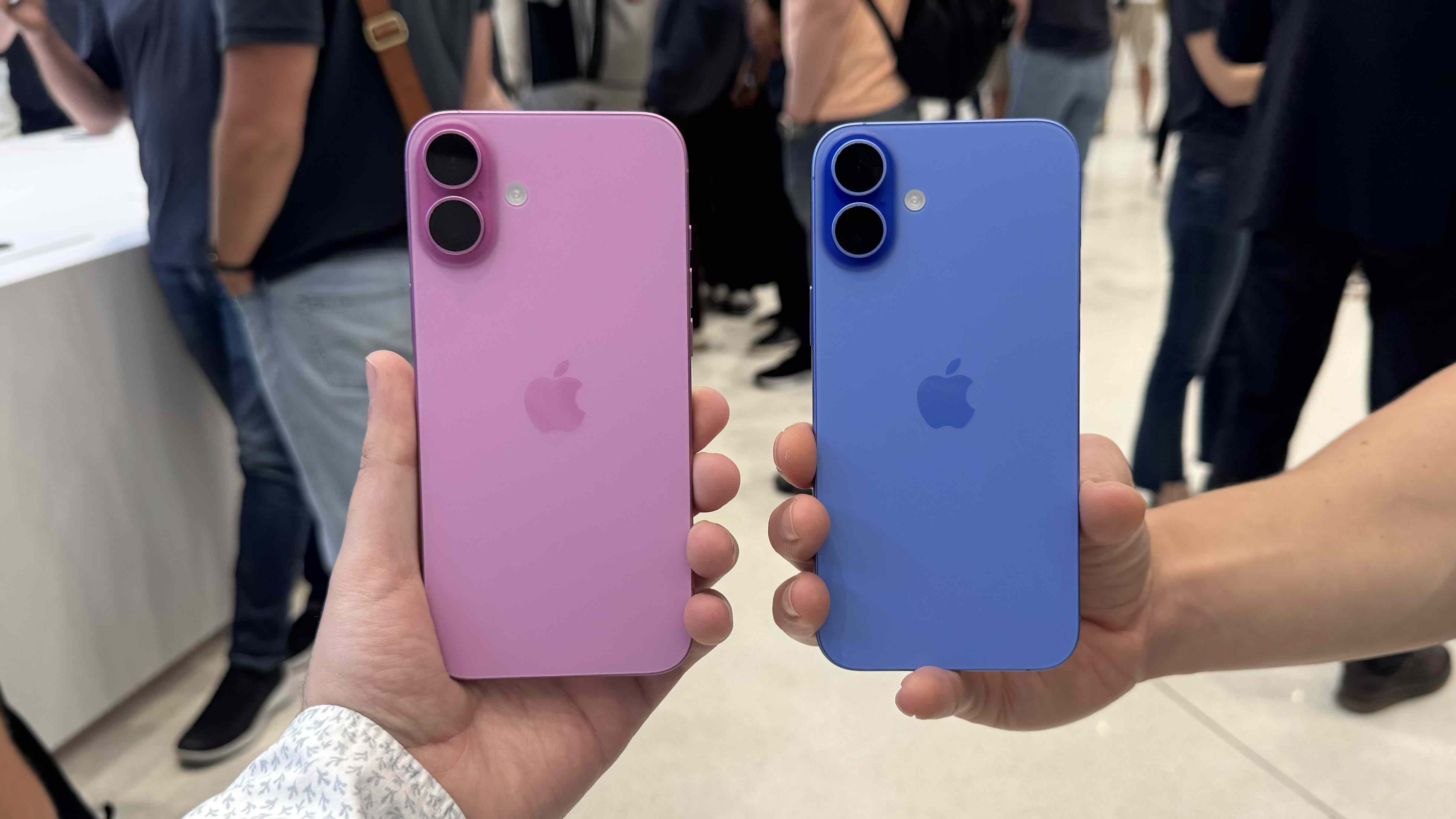
9. Apple iPhone 16
Our expert review:
Specifications
✅ You want more control for taking photos: The new Camera Control is an excellent upgrade that makes shooting photos and adjusting settings on the fly much easier.
✅ You want Pro-level power for less: The new A18 chip is plenty powerful, feels fast in all tasks, and puts the standard iPhone closer to the Pros than ever.
❌ You're happy with an iPhone 15: If you don’t care about the new camera buttons or Apple Intelligence, this isn't a must-have upgrade.
❌ You want the best screen and zoom: You'll have to go Pro to get a 120Hz ProMotion display and a real optical zoom lens.
📱 The iPhone 16 is a powerful and exciting upgrade that blurs the line between the standard and Pro models. With the new A18 chip, vibrant new colors, and the fantastic Camera Control, it’s a great choice for anyone who doesn’t need to spend extra on a Pro. ★★★★½
Design: This year's iPhone 16 feels like a breath of fresh air, with bouncy and vibrant new colors that pop. The Action Button and new Camera Control are excellent additions, and the new vertical camera stack gives it a fresh look.
Display: The 6.1-inch Super Retina XDR display is a pleasure to use, offering punchy, vibrant colors and 2,000 nits of peak brightness. It gets bright enough to combat a sunny day, and the Dynamic Island is super functional for Live Activities.
Camera: This is a big year for the base camera, thanks to the game-changing new Camera Control. The 48MP main camera captures rich details, and the ultrawide lens now includes a very fun macro photography mode.
Performance: It’s a welcome surprise that the iPhone 16 gets a brand-new A18 chip, which provides plenty of power for years to come. In my tests, the improved GPU made intense games fly, and I couldn't make the phone slow down.
Battery life: The iPhone 16 delivers solid all-day battery life, getting me through a full day from morning to evening. Support for faster 25W MagSafe wireless charging and 50% wired charging in about 30 minutes is a welcome addition.
Value for money: For the starting price, the iPhone 16 offers good value and feels more like a Pro than ever. It has a powerful new chip, great cameras, and new controls, making it a worthwhile upgrade for anyone with an older iPhone.
Read our full Apple iPhone 16 review
Attributes | Notes | Rating |
Design | Not only does the iPhone 16 feel great in the hand with extra ergonomics, the camera layout looks the part, and the color palette is terrific. | 4.5 / 5 |
Display | While it’s not ProMotion or Always-on, the iPhone 16 still offers a vibrant screen that is great for myriad tasks indoors or outdoors. | 4 / 5 |
Performance | With the new A18 inside, the iPhone 16 feels like it can keep up with the Pros. | 4.5 / 5 |
Camera | The new Camera Control steals the attention and lets you get more out of an excellent main camera and a good ultrawide shot that allows for unique framing. | 4.5 / 5 |
Software | iOS 18 provides many small updates, and once Apple Intelligence is here, it will be supported. | 4 / 5 |
Battery | You can expect around a day of use from the iPhone 16, but it won’t stretch to two. | 4 / 5 |
Value | The standard 16 feels more like a Pro, and even with only 128GB of storage, it’s good value. | 4 / 5 |
FAQs
What is the best phone in the world in 2025?
We're currently shaking up our list to decide the best phone you can buy. A month ago I would have said the iPhone 16 Pro Max is the best iPhone and the OnePlus 13 is the best Android phone, but we've reviewed the iPhone 17 Pro Max and the Google Pixel 10 Pro XL since then, and we are deciding where those phones fall on this list of the best - they might end up on top!
Which phone has the best cameras?
The best camera phone will depend on the photos you like to take, but the iPhone 17 Pro Max is probably the best camera among iPhone devices, and the Google Pixel 10 Pro XL is the best camera for Android fans.
What is the best cell phone service?
That will depend on where you live and your local providers, not the phone you choose. Ask your neighbors and nearby friends about their experience. Don't be afraid to try a new service for up to a month and then switch to a different carrier if it isn't working for you.
What is the best Samsung phone?
The best Samsung phone is the Galaxy Z Fold 7. It demonstrates all of Samsung's most advanced technology, especially its design prowess. Samsung is the best as fitting more phone into a smaller package, and the Z Fold 7 is the ultimate expression of that philosophy.
What phones are waterproof?
What phones can I get wet, and what is the level of water resistance on most phones?
You might be surprised to learn that every phone on this list can take a dunk underwater with no trouble. If you get them dirty, you can rinse them gently in the sink (as long as there are no cracks or other damage). All of our best phone picks are rated against water up to IPx7, which means that they can survive a dunk in one meter of fresh water for up to 30 minutes. Some phones, like the OnePlus 13, are even more durable, with an IP69 rating to survive jets and spraying water, and a deeper, longer dunk.
Which phone carrier is best?
Which wireless mobile network should I choose?
That's a tough call, so the best advice I can offer is to ask around and find people in your area who are happy with their cell service - then choose the network they use. Networks vary greatly over the miles and miles of US geography, so while I might be able to say that one offers better performance nationwide, that same carrier might not be the best in your area. I've used all of the major US networks - Verizon, AT&T, and T-Mobile - and I have seen great performance from all of them, as well as signal loss and dropouts from each.
Is phone insurance protection worth it?
Should I buy the extended warranty and phone insurance that my phone maker offers?
In general, I buy phone insurance with my own personal phones to protect against damage. I have butter fingers, and I have dropped phones so hard that they break even in a sturdy case. With insurance, my last iPhone drop cost more than $100 deductible to repair, but without insurance it might have been a total loss. I have had great experience with Apple's insurance plan, but I have found that companies using third-party insurance may be harder to deal with. If you don't have insurance, you should at least have a back-up plan or cheap phone if your phone breaks so that you can stay connected.
Which phone has the biggest screen?
Which phones give me the biggest display?
If you want the absolute biggest screen on your phone, you will need to buy a foldable. A flip phone like the Motorola Razr Ultra (2025) can pack a whopping 7-inch display inside, which is larger even than the 6.9-inches you get with an iPhone 16 Pro Max or Galaxy S25 Ultra. But if you want to go even larger, you need a tablet-style foldable like the Samsung Galaxy Z Fold 6, which gives you a 7.6-inch display inside. That's almost as big as an iPad mini, tucked away in your pocket.
How do I choose the best phone?
The first thing you need to decide when buying a new smartphone is how much you want to spend. The smartphone market varies dramatically, from very high-end handsets that cost well over four-figures, to much cheaper phones that can be found for only a few hundred. I have options on this list at both ends of the price spectrum.
Once you've decided how much you want to spend, you should decide whether you want to try one of the best Android phones or go for one of the best iPhones. Often, the platform decision has more to do with your work, your friends and family and what they use to share photos and messages, and what sort of computer or devices you already own.
If you're looking for something outside the norm, I have plenty of unique options, as well. There are phones with a built-in pen for writing, and phones that fold in half to be more compact. There are large phones, small phones, and Max-sized phones. I have phones with space-level zoom, and phones that specialize in touching portraits.
No matter what phone you choose, you can be sure that I've thoroughly tested and vetted every phone on this list, and I know you'll be satisfied with any of these devices in your pocket.
How we test
I've only included phones on this list that have been thoroughly tested in Future Labs and in the real world by our expert review editors. I test every feature on a phone, then we dive deeper to discover all of the hidden goodies.
I test phones rigorously for battery life and charging times, processor speed and performance, and especially for camera and video recording capabilities. I make sure that phones deliver on the promises and claims they make. If Samsung says a phone charges in 30 minutes, I time it to make sure.
I've seen every phone you can buy, so I know how each model stacks up against one another. I use both iPhone and Android phones all the time, so I know what I'm saying about the phones you buy, no matter what you pay. I make sure the phones deliver what I'd expect for the price.
Once I'm done, I never stop. I update our reviews as the phones are updated. Our reviews are always fresh, so check again before you buy to make sure you're getting the latest review on the best phones you'll find.
Who has the best cell phone deals?
We track the best phone deals every day, so we can always tell you who has the best phone deals at the moment you are shopping for a phone.
Which is the best iPhone?
If you want the best iPhone for you, check out our list of the Best iPhones you can buy right now. We don't just list them from most expensive to least expensive, we can help you choose the iPhone that meets both your budget and your phone needs.
What phone has the best battery life?
The OnePlus 13 is our current battery life champ. In our Future Labs tests, the OnePlus 13 lasted almost 19 hours of constant use, which is more than an hour longer than the best iPhone or Galaxy phone managed.
Sign up for breaking news, reviews, opinion, top tech deals, and more.

Starting more than 20 years ago at eTown.com. Philip Berne has written for Engadget, The Verge, PC Mag, Digital Trends, Slashgear, TechRadar, AndroidCentral, and was Editor-in-Chief of the sadly-defunct infoSync. Phil holds an entirely useful M.A. in Cultural Theory from Carnegie Mellon University. He sang in numerous college a cappella groups.
Phil did a stint at Samsung Mobile, leading reviews for the PR team and writing crisis communications until he left in 2017. He worked at an Apple Store near Boston, MA, at the height of iPod popularity. Phil is certified in Google AI Essentials. His passion is the democratizing power of mobile technology. Before AI came along he was totally sure the next big thing would be something we wear on our faces.